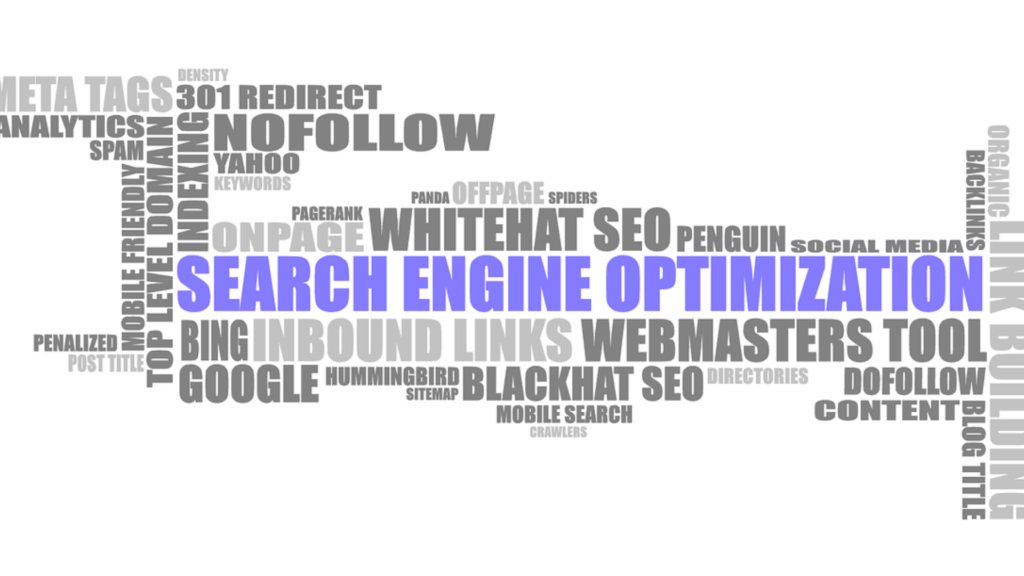SEO in Digital Marketing
In today’s competitive online landscape, Search Engine Optimization (SEO) is a critical component of any successful digital marketing strategy. SEO is the practice of optimizing your website to rank higher on search engine results pages (SERPs), increasing visibility, driving organic traffic, and ultimately enhancing your business’s online presence. Let’s dive into the essential steps to effectively incorporate SEO into your digital marketing efforts.

1. Understand SEO Basics and Its Importance
Before plunging into the specialized angles, it’s fundamental to comprehend what Web optimization is and why it’s significant for advanced advertising. Web optimization centers around working on your site’s permeability by following prescribed procedures framed via web crawlers like Google. Higher permeability prompts more traffic, which can bring about expanded deals, commitment, and by and large memorability.
2. Conduct Keyword Research
Keyword research is the foundation of SEO. Keywords are terms or phrases that people type into search engines when looking for information. By identifying and targeting the right keywords, you can attract the right audience to your website. Use tools like Google Keyword Planner, Ahrefs, or SEMrush to find keywords that are relevant to your business and have a balance of search volume and competition.
Steps to Conduct Keyword Research:
- List out topics related to your business or industry.
- Use keyword research tools to find variations and related terms.
- Look for long-tail keywords (phrases with 3-4 words) as they often have lower competition and higher conversion potential.
- Analyze competitor keywords to see what is working for them and find gaps in your content.
3. Optimize On-Page SEO
On-page SEO involves optimizing elements on your website that affect search engine rankings. Each webpage should be carefully crafted with SEO in mind. This includes the content, headings, images, and HTML tags to make it easier for search engines to understand your page’s content and relevance.
On-Page SEO Techniques:
- Title Tags: Craft keyword-rich titles that accurately represent each page.
- Meta Descriptions: Write compelling meta descriptions that include target keywords and encourage users to click on your link.
- Headings (H1, H2, H3): Organize content using heading tags, with H1 as the main title and H2 or H3 for subheadings.
- Content Quality: Write informative and engaging content that provides real value. Use keywords naturally without keyword stuffing.
- Internal Linking: Link to other relevant pages on your website to keep users engaged and guide them through related content.
4. Optimize Off-page SEO
Off-page SEO refers to the activities conducted outside of your website that impact its visibility and ranking on search engine results pages (SERPs). Unlike on-page SEO, which focuses on optimizing content and structure within your site, off-page SEO aims to enhance your site’s authority and credibility through external factors.
- Profile Creation • Create profiles on relevant websites, forums, and social media platforms. This often includes adding a link back to your website.
- Social Bookmarking • Submit your website or blog posts to social bookmarking sites like Reddit, Digg, or StumbleUpon.
- Article Submissions • Write and submit articles to article directories like Medium, EzineArticles, or HubPages, including links back to your site.
- Image Submissions • Share images and infographics on platforms like Pinterest, Flickr, or Instagram, with links back to your website.
- Video Submissions • Upload videos to platforms like YouTube, Vimeo, or Dailymotion, including links in descriptions back to your website.
- Blog Commenting • Engage with other blogs in your niche by leaving thoughtful comments that provide value and include a link back to your website.
- Guest Posting • Write articles for other blogs or websites in your industry, including a link back to your site in the content or author bio.
5. Focus on Technical SEO in Digital Marketing
Essential Technical SEO Elements:
- Site Speed: A faster website improves user experience and ranking. Use tools like Google PageSpeed Insights to analyze and improve load times.
- Mobile-Friendliness: Ensure your website is responsive and works well on mobile devices, as Google now prioritizes mobile-first indexing.
- SSL Certificate: A secure website (https://) is essential for SEO, as it signals trustworthiness.
- XML Sitemap: Submit an XML sitemap to search engines to help them crawl and index your site more efficiently.
- Robots.txt File: Use a robots.txt file to control which parts of your site search engines can & cannot access.

6. Create High-Quality Content
Content is a vital component of SEO and digital marketing. High-quality, valuable content enhances SEO and establishes trust with your audience. Regularly updated content that addresses user needs and questions keeps visitors returning and improves search rankings over time.
Tips for Effective Content Creation:
- Create blog posts, guides, infographics, and videos that answer common questions or solve problems.
- Write long-form content (1,500+ words) as it performs better in search rankings.
- Ensure content is well-structured with headers, bullet points, and images to make it more readable.
- Use relevant keywords naturally throughout the content without overloading it.
7. Optimize for Local SEO
If you’re targeting a local audience, local SEO is essential for increasing visibility among nearby customers. Optimizing for local SEO makes it easier for users to find your business when they search for related services or products in their area.
Local SEO Strategies:
- Google My Business (GMB): Create and optimize a Google My Business profile with accurate information, including your business name, address, phone number, website, and business hours.
- Local Keywords: Include keywords with local terms, such as “near me” or your city’s name, in your content and metadata.
- Customer Reviews: Encourage satisfied customers to leave positive reviews on your GMB profile and other review sites.
- Local Directories: Ensure your business is listed on relevant local directories and websites.
8. Utilize Link Building SEO in Digital Marketing
Link building is crucial for SEO because it helps establish your site’s credibility and authority within your industry. When reputable websites link to yours, search engines interpret this as a vote of confidence. However, it’s important to prioritize quality over quantity in your link-building efforts.
Strategies for Link Building:
- Guest Blogging: Write guest posts for reputable websites within your niche to gain backlinks.
- Create Shareable Content: High-quality and informative content is more likely to be shared and linked to by others.
- Reach Out to Influencers: Collaborate with influencers or bloggers in your industry to expand your reach and gain backlinks.
- Monitor Backlinks: Use tools like Ahrefs or SEMrush to track backlinks and disavow any low-quality or spammy links that could harm your ranking.
9. Leverage Social Media to Amplify SEO in Digital Marketing
While social media is not a direct ranking factor, it plays a vital role in driving traffic and increasing brand visibility, which indirectly boosts SEO efforts. By sharing content on social platforms, you encourage more people to visit your website and share your content, expanding your reach.
Social Media SEO Tips:
- Share blog posts, videos, or infographics on social platforms to drive traffic.
- Engage with followers, respond to comments, and encourage shares to improve brand visibility.
- Use relevant hashtags to reach a wider audience and connect with users who are interested in your niche.
10. Monitor SEO Performance and Adjust strategies.
Website optimization is a ceaseless interaction that requires continuous checking and changes. Use Web optimization investigation apparatuses to quantify the progress of your endeavors and recognize regions for development.
Important Metrics to Track:
- Organic Traffic: Monitor the number of visitors coming to your site through search engines.
- Keyword Rankings: Track how your target keywords rank over time and adjust as necessary.
- Bounce Rate: Analyze the percentage of visitors who leave your site quickly; a high bounce rate may indicate that users are not finding relevant information.
- Conversion Rate: Measure how many visitors are taking desired actions on your site, such as making a purchase or filling out a contact form.

11. Stay Updated with SEO Trends in Digital Marketing
SEO is constantly evolving, with search engines frequently updating their algorithms. To stay competitive, you must keep up with SEO trends and adapt your strategies accordingly. Follow industry blogs, attend webinars, and join SEO communities to stay informed.
Conclusion: SEO is Essential for Digital Marketing Success
SEO is a fundamental aspect of digital marketing that drives organic traffic, establishes authority, and enhances online visibility. By implementing effective SEO practices—such as keyword research, on-page optimization, content creation, and link building—businesses can improve their search rankings and reach a larger audience. Although SEO requires consistent effort and adaptability, the long-term benefits make it an invaluable component of any digital marketing strategy.
Pingback: How to Build a Website in WordPress?